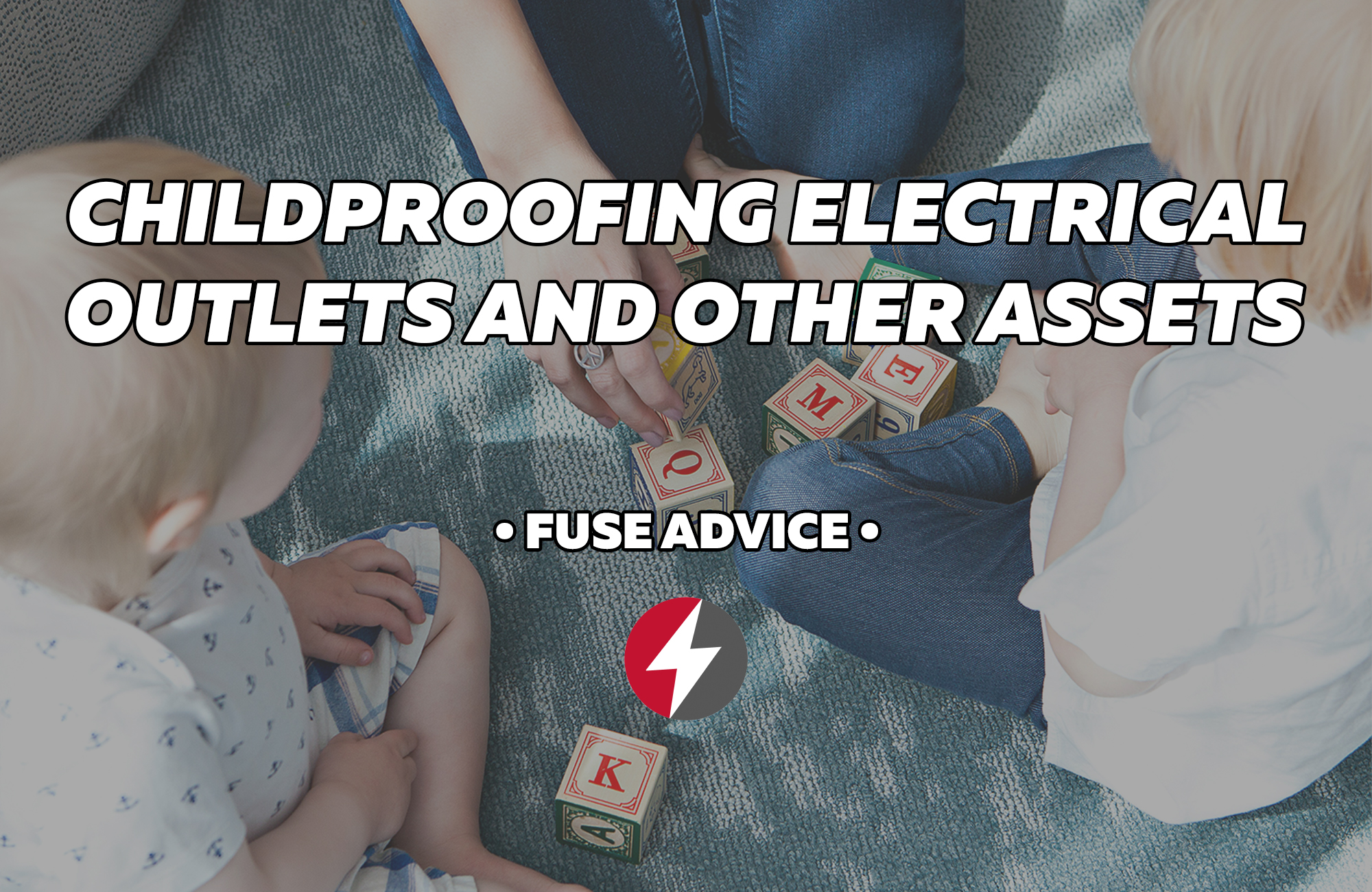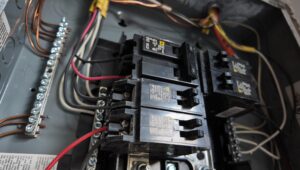Childproofing electrical outlets and other assets in your home is an incredibly important step if you want to create a safe environment for kids. Small children are naturally curious and absolutely love to explore their surroundings. Unfortunately, it can often put them at risk of injuries, or, even worse, electrical shock. In this article FUSE electricians share their best tips to make your home’s electrical system safer for children.

1. Understanding the Risks
The home is a playground for children — as pretty much any other place. But even familiar and seemingly safe territory can contain danger of electrical hazards that pose significant risks to safety. The main concern revolves around electrical outlets. You too should remember your parents telling you to absolutely NOT put your fingers inside the outlets. However, adults’ guidance does not always bear fruit since to the curious eyes of a child, the outlets might seem like they are asking to be poked with something that fits. This curiosity can lead to electric shocks or burns, incidents that are unfortunately not uncommon among toddlers and young children. Beyond outlets, the risks extend to electrical cords and appliances. Children might chew on cords or pull appliances down on themselves, leading to potential injury or even electrocution.
It’s essential to recognize these dangers before something happens. Therefore, understanding these risks is the first step in crafting a comprehensive childproofing strategy that ensures the safety of young ones while maintaining the functionality of the home’s electrical system.
2. Tamper-Resistant Outlets
Tamper-resistant outlets are primarily designed to safeguard children from electrical hazards. Unlike traditional outlets, these outlets have a built-in shutter mechanism that prevents the insertion of foreign objects when unequal pressure is applied to both sides. This means that unless a plug is correctly inserted, applying even pressure to both shutters, the outlet remains closed off to curious fingers or objects. The introduction of tamper-resistant outlets has been a significant advancement in electrical safety, making them a standard in new home constructions and renovations. The National Electrical Code (NEC) now requires their installation in many areas of the home, underscoring their importance in childproofing efforts.
However, transitioning to tamper-resistant outlets involves more than just replacing the old with the new. It requires understanding the specific needs of each room and the behaviors of children within those spaces. For instance, outlets located in play areas or bedrooms might need more attention compared to those in locations where children don’t spend a lot of time. The installation process itself might seem too much, but it’s a straightforward task that is a quick job for a professional electrician.
Moreover, it’s essential to recognize that while tamper-resistant outlets significantly reduce the risk of electrical injury, they are not a sole solution. Let’s go further and explore other means.
3. Outlet Covers and Plates
Outlet covers and plates provide an additional layer of protection against electrical hazards, especially in homes where tamper-resistant outlets have not yet been installed. These accessories come in various forms for different needs and preferences. Simple plastic plugs are the most basic type: you insert them into unused outlets to block access. They are effective and inexpensive, but they require constant attention to make sure they stay in place, as they can be removed by a particularly determined children or forgotten by less dedicated adults after use.
Box covers offer a more secure solution for outlets because they trap the entire outlet and plugs under a protective cover. This design not only prevents children from unplugging electrical devices but also shields them from exposed outlets. Sliding plate covers represent a more permanent solution. These covers automatically snap back into place when the outlet is not in use, providing constant protection.
Choosing the right type of outlet cover depends on the specific needs of each household and the level of convenience desired. Regardless of the choice, it’s crucial to ensure that these covers are correctly installed and regularly checked to maintain their effectiveness over time.
4. Secure Cable Management
Proper cable management is not aesthetics even if it is indeed satisfying to see properly arranged cables. Apart from pleasuring your OCD, it’s a critical component of childproofing electrical systems. Loose cables not only pose tripping hazards but also invite curious hands to tug, chew, or play with them. Cord shorteners are an excellent tool for managing excess length, reducing the temptation for children to pull on dangling cords. Cable boxes conceal power strips and excess cables and keep them contained in a child-resistant enclosure. For added security, cord concealers can be used to run cables along walls or under carpets thus hiding them from view and reach.
The placement of furniture also plays an important in cable management,. Heavy pieces can be strategically positioned to block access to outlets and conceal cords. This method childproofs the area and contributes to a cleaner, more organized space. By prioritizing safety without compromising on functionality, parents can create a home environment that encourages exploration without the risks of electrical systems.
5. Childproofing Power Strips and Extension Cords
Power strips and extension cords are indispensable in modern homes, yet they introduce new risks in environments with children. Childproofing these devices can be done with the use of power strip covers. These covers encase the entire power strip, including the plugs and switches.
Arranging furniture to block access to power strips and extension cords is a practical childproofing strategy. This not only makes it harder for children to reach these devices but also minimizes the chances of tripping over cords. For added security, selecting power strips and extension cords that come with safety certifications and are designed with child safety in mind is crucial. These models often feature tamper-resistant outlets and automatic shut-off mechanisms in case of overload, providing an extra layer of protection.
Incorporating these strategies into your childproofing plan ensures that power strips and extension cords are used safely and responsibly. Regular checks and maintenance of these devices are necessary to identify wear and tear or other potential hazards, ensuring they continue to provide safe electrical access in a child-friendly home.
6. Regular Safety Checks and Education
Ensuring the electrical safety of a home is an ongoing process that involves regular inspections and education. Parents are also advised to conduct routine safety checks and address potential hazards before they become a problem. This includes checking for frayed wires, loose outlets, or damaged appliances that could pose a risk to children. Additionally, educating children about the dangers of electricity and establishing rules around the use of electrical devices can be your allies in childproofing strategy.
Simple lessons tailored to the child’s age can be effective in teaching them the importance of electrical safety. For younger children, this might involve explaining why they should not touch outlets or cords, while older children can learn the basic principles of how electricity works and the reasons behind certain safety measures. Engaging children in these discussions not only reinforces the importance of electrical safety but also empowers them to make safer choices as they grow and become more independent. And if you need any help with replacing those outlets or covering them with professional electrician — call Fuse Service! We are available at (669) 242-5354 or support@fuseservice.com. Our technicians have children of their own, so they definitely know how to make your house a completely safe and friendly to the little ones!






